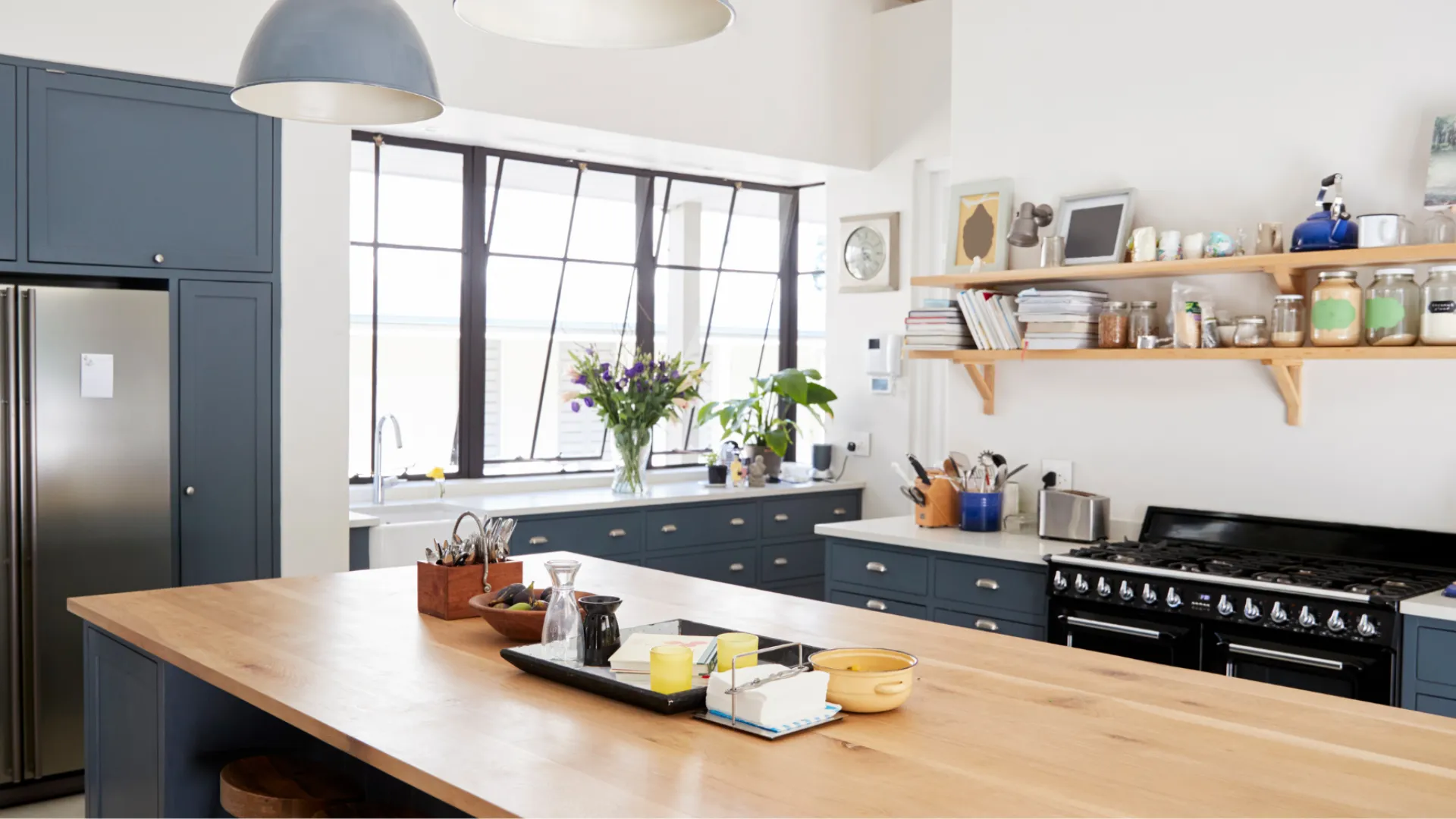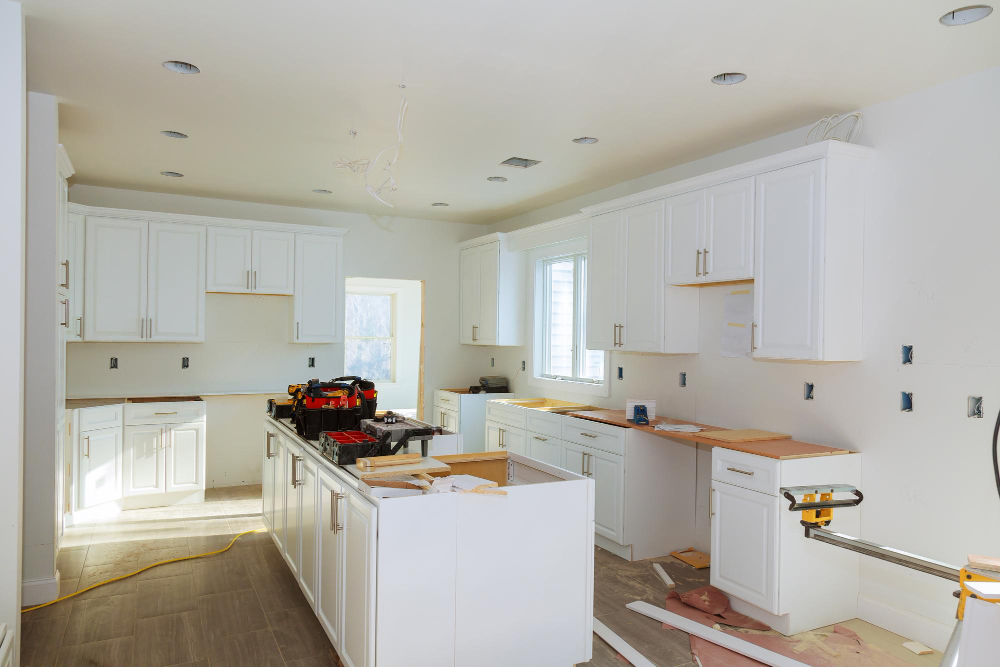Making a mistake in renovating the kitchen is easy, as everyone wants a well-equipped kitchen to work with, especially the chefs that work in it most of the time. However, as important as it is in a house, people tend to squeeze their wants into their kitchen and make many mistakes that made you regret lots of money loss.
Here we will discuss the mistakes in kitchen renovation and how they can be corrected so you can have a comfortable cooking space.
Renovating Mistake #1: Be Clear On the Requirements

Image Credit: Canva
This mistake in renovating the kitchen is easy to make, as it can be tempting to jump straight into picking beautiful fixtures and finishes for your new kitchen but before you do that, you need to get the requirements right.
Even if you call in a kitchen designer, no one knows your or your family's needs as well as you do, as you are the one who is going to be using it. So let's start by doing a thorough assessment of it.
Before starting a new kitchen design, ask yourself:
- What is it about your current kitchen that you most want to change? For example, do you need better lighting or more bench space to prep? Get specific.
- What appliances do you need and what appliances do you desire. Because as you'll find out later in the list, it isn't always possible to fit everything in.
- Is there anything in your current kitchen that you do not use that is obsolete? For example, a warming drawer that you thought was cool but actually takes up precious storage space.
- Is it your forever kitchen or just a short-term solution until you sellWhat is your objective for the kitchen renovation?
- What is your budget to begin with?
After you got your answers to the questions above, you will have a clear picture of what is needed to remodel your kitchen.
Renovating Mistake #2: Try to Leave Sufficient Clearance

It's easy to cram too much into a tight space, still, remember that the kitchen is one of the most heavily used parts of any home. Sufficient aisle clearance is crucial to avoid accidents when you prepare meals or tackle cleaning tasks. Ideally, you'll want to leave a minimum of 42 inches between walls, kitchen cabinetry, and any bulky appliances.
It's also important to think about where you are placing those big kitchen staples. Try to keep refrigerators, ovens, and sinks separated from one another. This will alleviate congestion and leave every kitchen user plenty of space to do their things.
Renovating Mistake #3: Imagine The Kitchen in 3D Before Designing

Image Credit: Canva
It is not wrong to want your kitchen to be gorgeous and fancy in terms of looks, but, if you can not make it fancy in terms of functionality, then it will only look folly in other people's eyes.
When planning your kitchen, you should walk around your kitchen, get a 3D image of the kitchen in your head, and try to picture the placements of the applications, doors, and cabinets.
Try to imagine the size and directions of them and see if it works if you put your desired kitchen design in. By having a clear image of the after-renovated kitchen, you will have no worry about working out the remodeling smoothly.
Renovating Mistake #4: Sort Out Your Cabinets and Cupboards BEFORE Your Appliances

Image Credit: Canva
Generally, it is much easier to build cupboards and cabinets around the measurements of appliances, rather than trying to find appliances to fit in the cabinets. Many kitchen renovators make the mistake of having the cupboards and cabinets built and then trying to buy the necessary appliances to fit in the allocated spaces.
This rarely ever works out well, as even a slight discrepancy in the measurements of your kitchen cupboards and cabinets can mean the difference between a successful installation and one that needs to be revised.
By having an accurate measurement of your appliances, you will get the affection from most kitchen designers, as they will be able to account for those appliances when finalizing the design specs for your kitchen cabinetry.
Renovating Mistake #5: Don't Forget About the Storage

Image Credit: Canva
This mistake in renovating the kitchen is needed to look into as storage is at a premium in any kitchen, no matter how large. You'll need to think carefully about storage solutions when designing your dream kitchen. While open shelves and cabinets are obvious choices, there are other alternatives that should be considered.
Will there be a lot of wall space remaining once cabinets have been mounted? Floating shelves and magnetic knife holders are worth looking into. You can also make the interiors of drawers and cabinets work better for you. Integrated cutlery sorters and knife holders will make everyday organization simple, adding in, tiered storage in overhead cabinets will also make it easier to retrieve ingredients and essential cookware.
In the pursuit of a dream kitchen, it's crucial to steer clear of common renovation mistakes. First and foremost, clarity on requirements is key. Before getting enamored with fixtures, assess your needs, preferences, and budget, ensuring a tailored design.
Adequate clearance is often overlooked; maintaining a minimum of 42 inches between elements prevents a cramped feel and fosters safety. Visualization in 3D before design is a prudent step, aligning aesthetics with functionality.
Prioritize sorting out cabinets before appliances, avoiding size discrepancies and ensuring a seamless fit. Lastly, storage is paramount—consider creative solutions like floating shelves and tiered storage for optimal organization.






